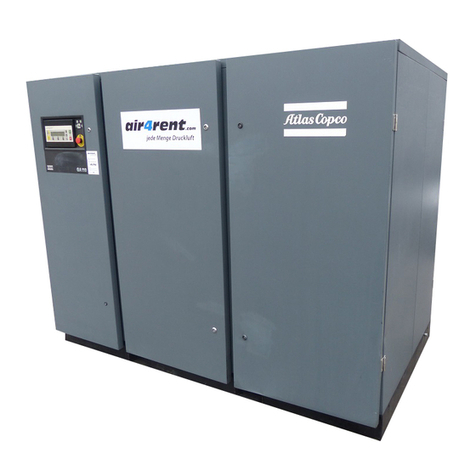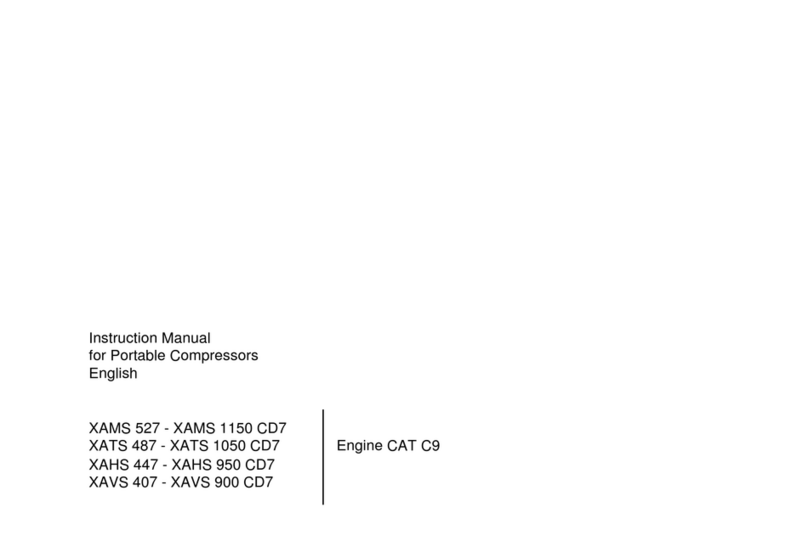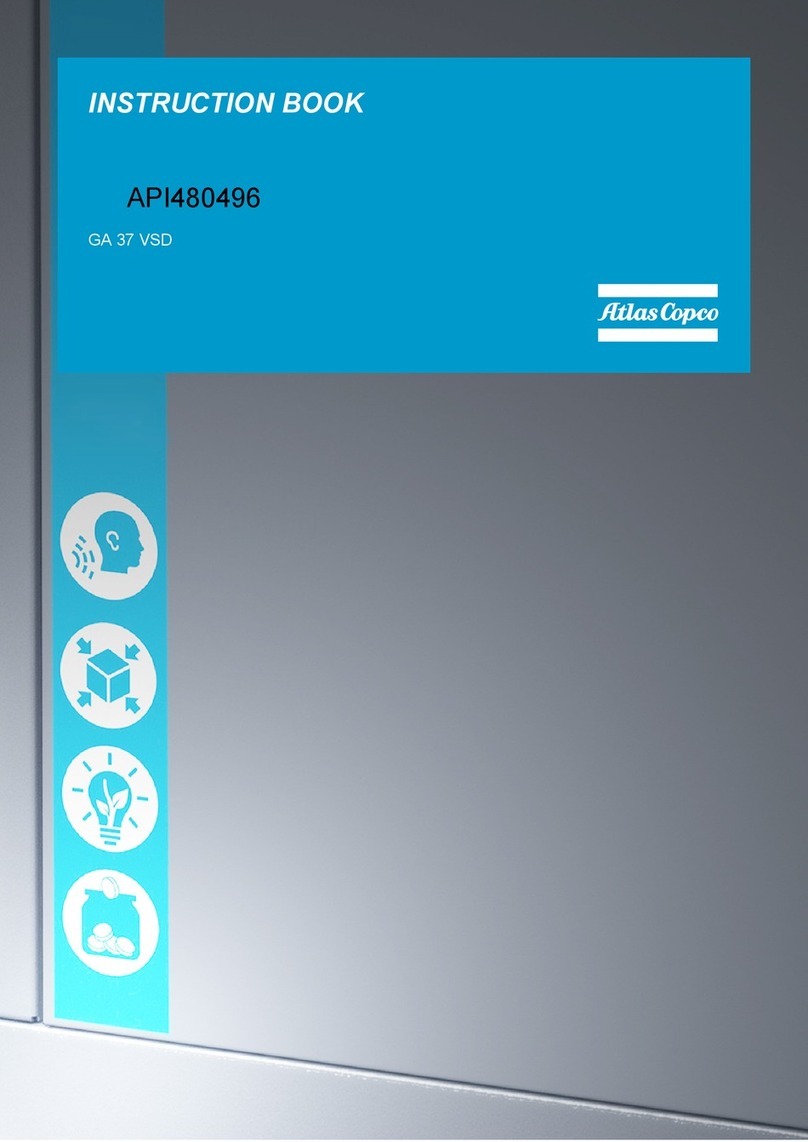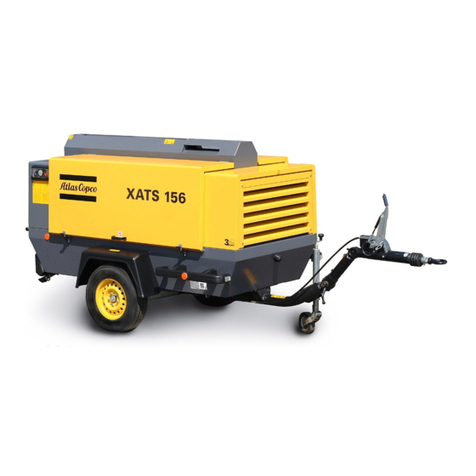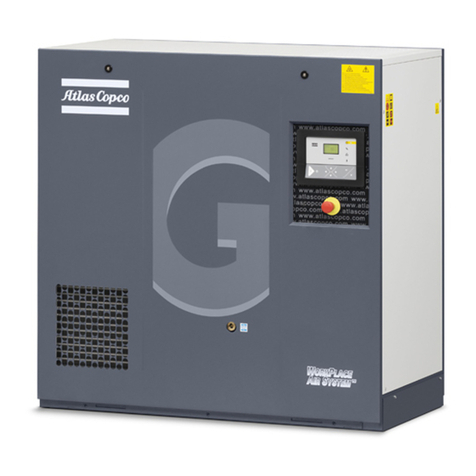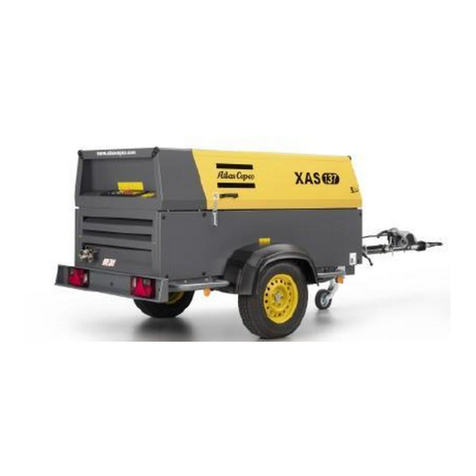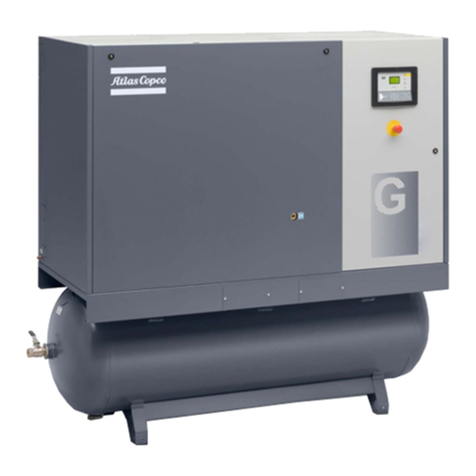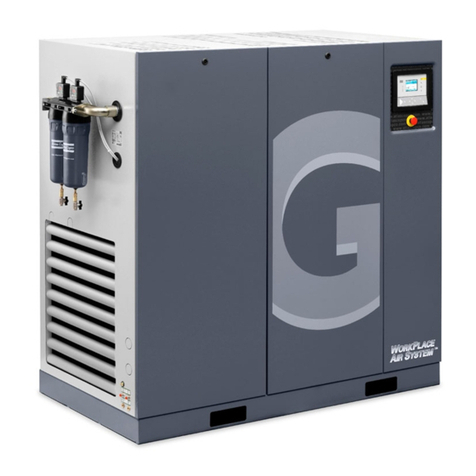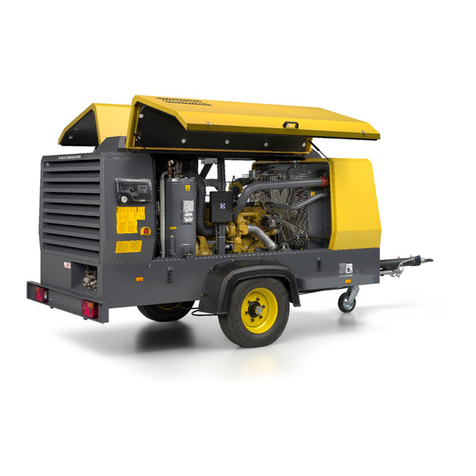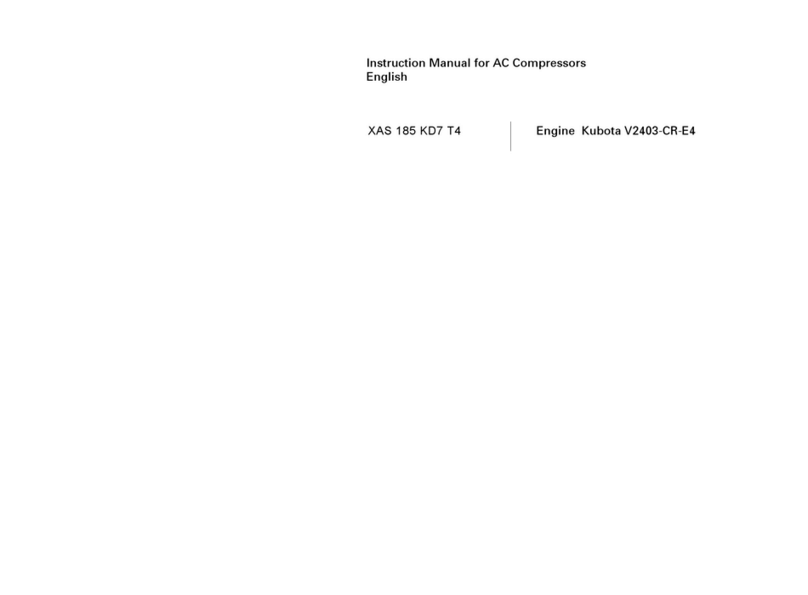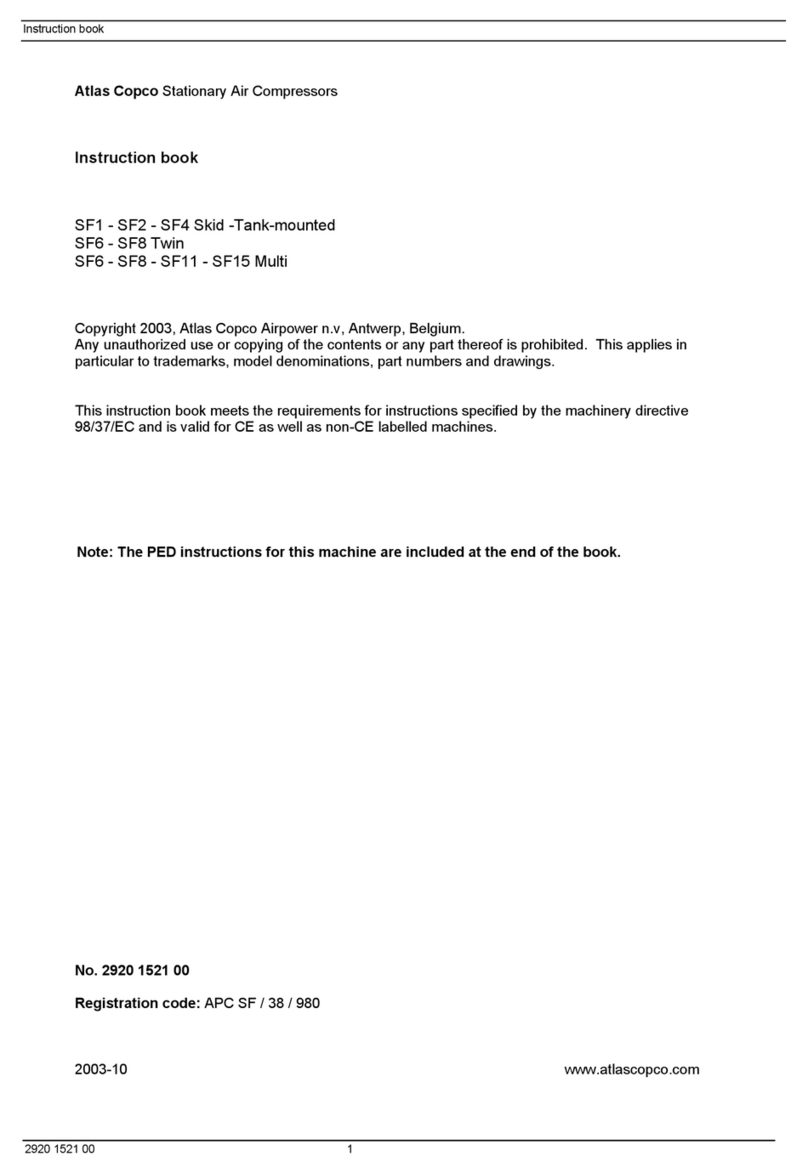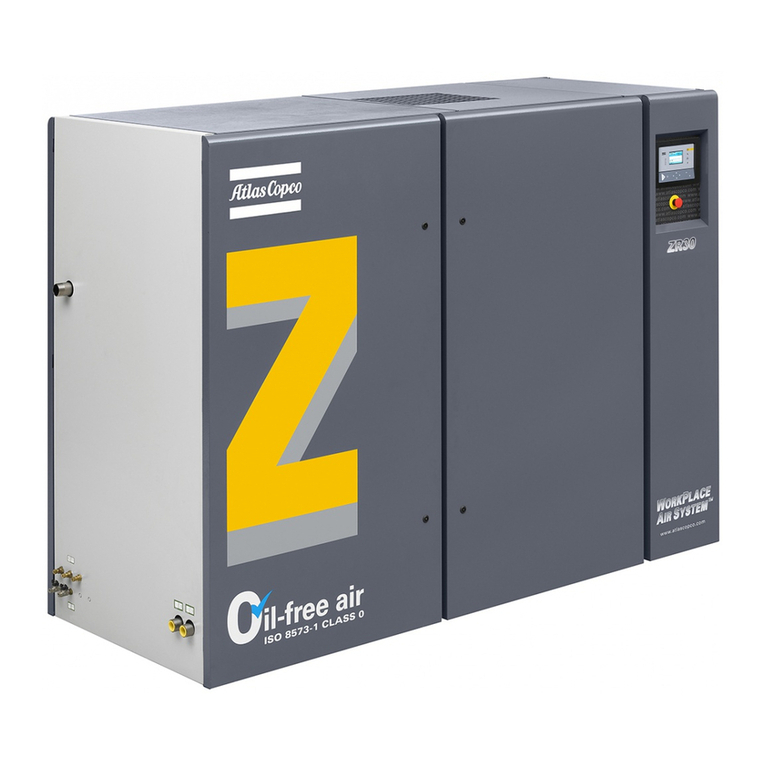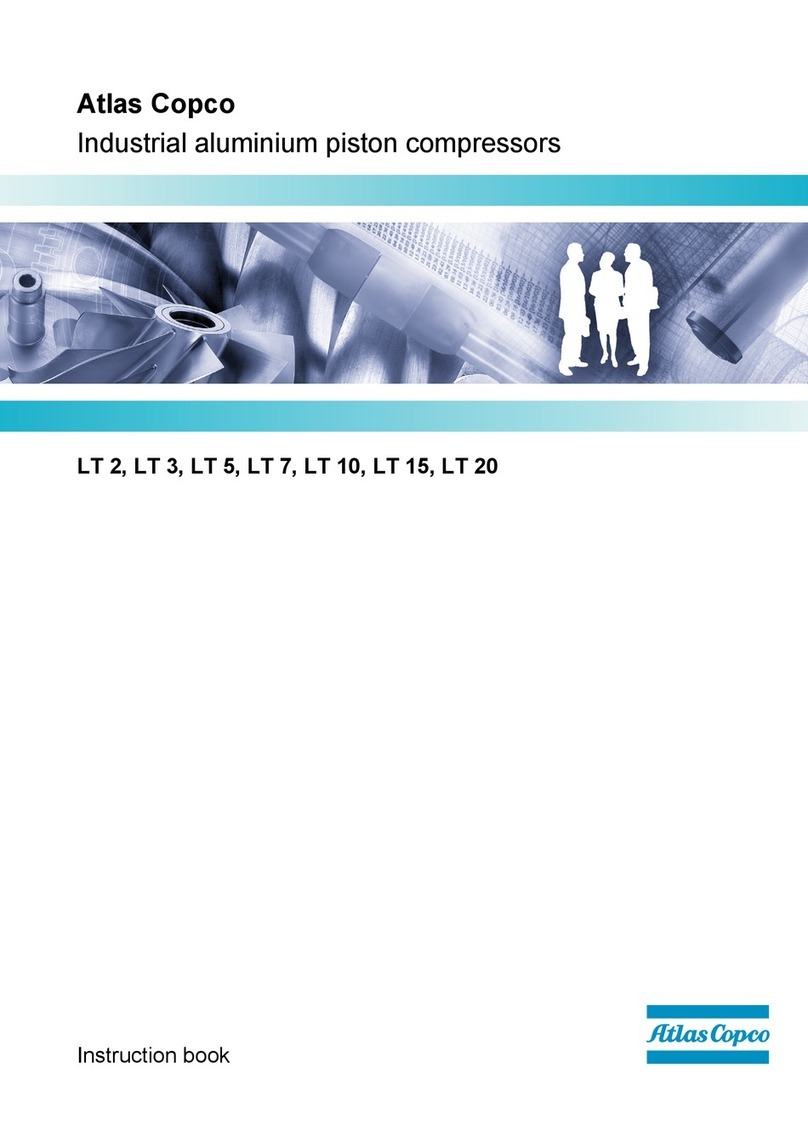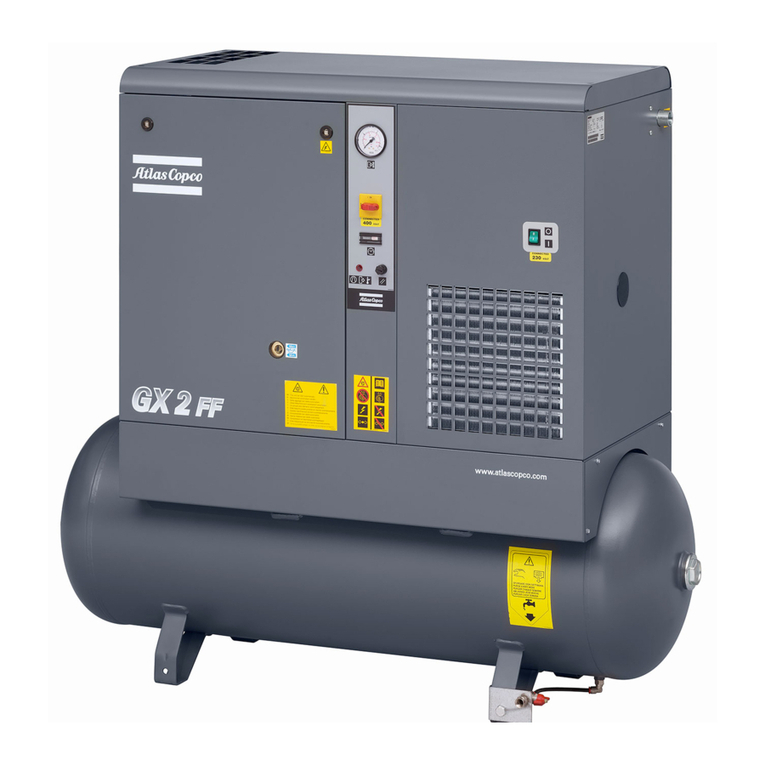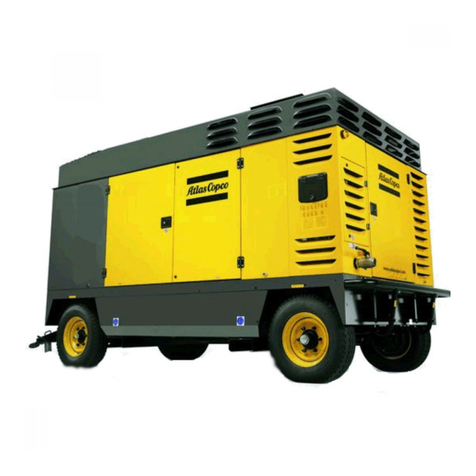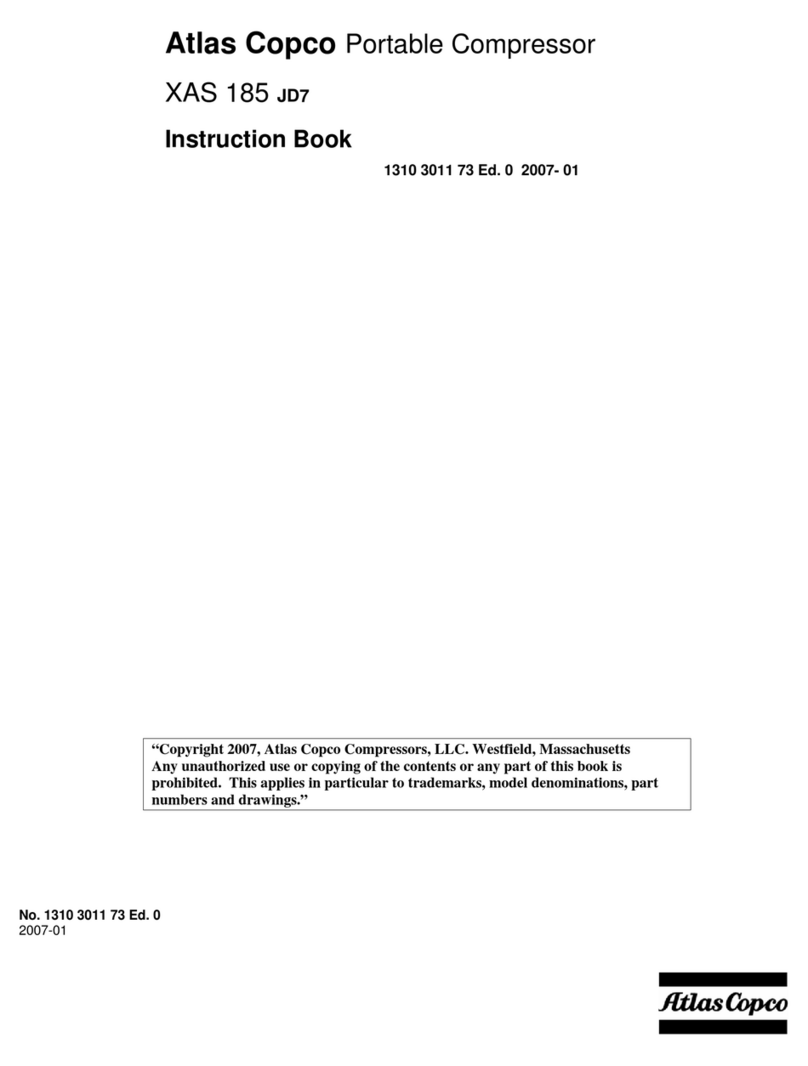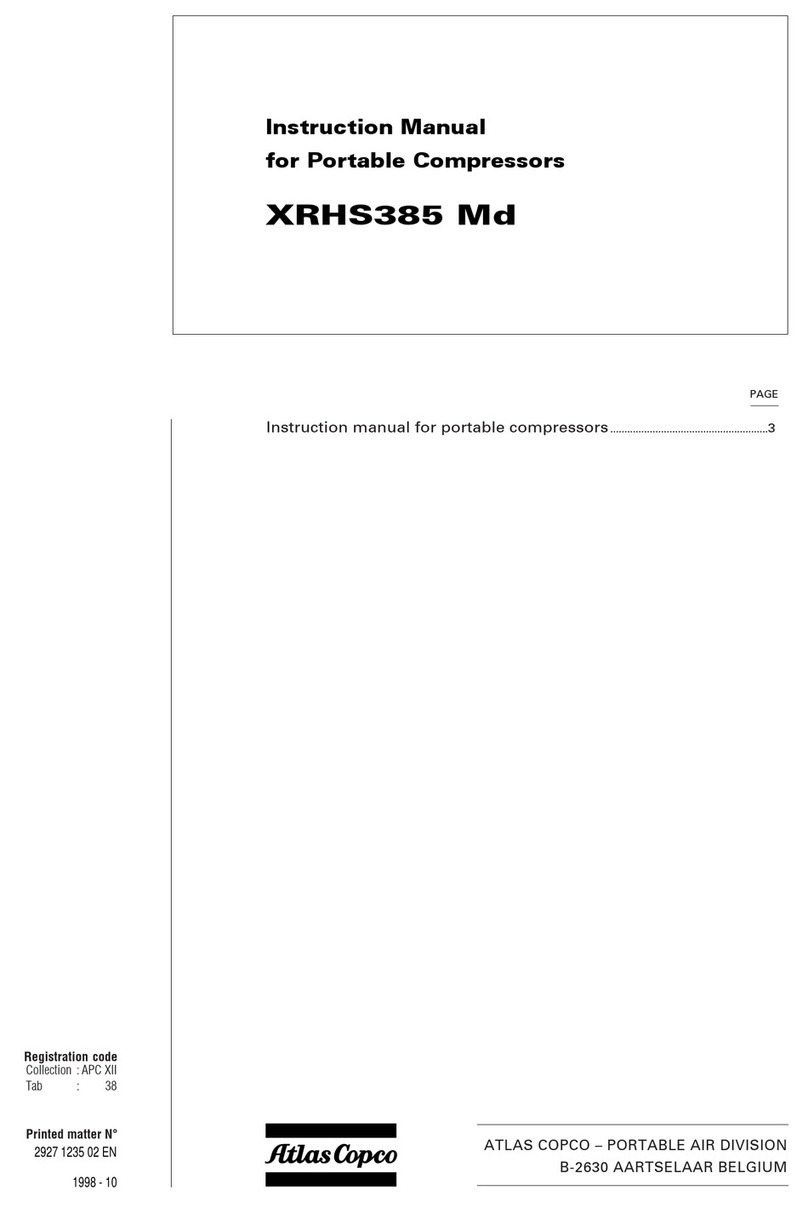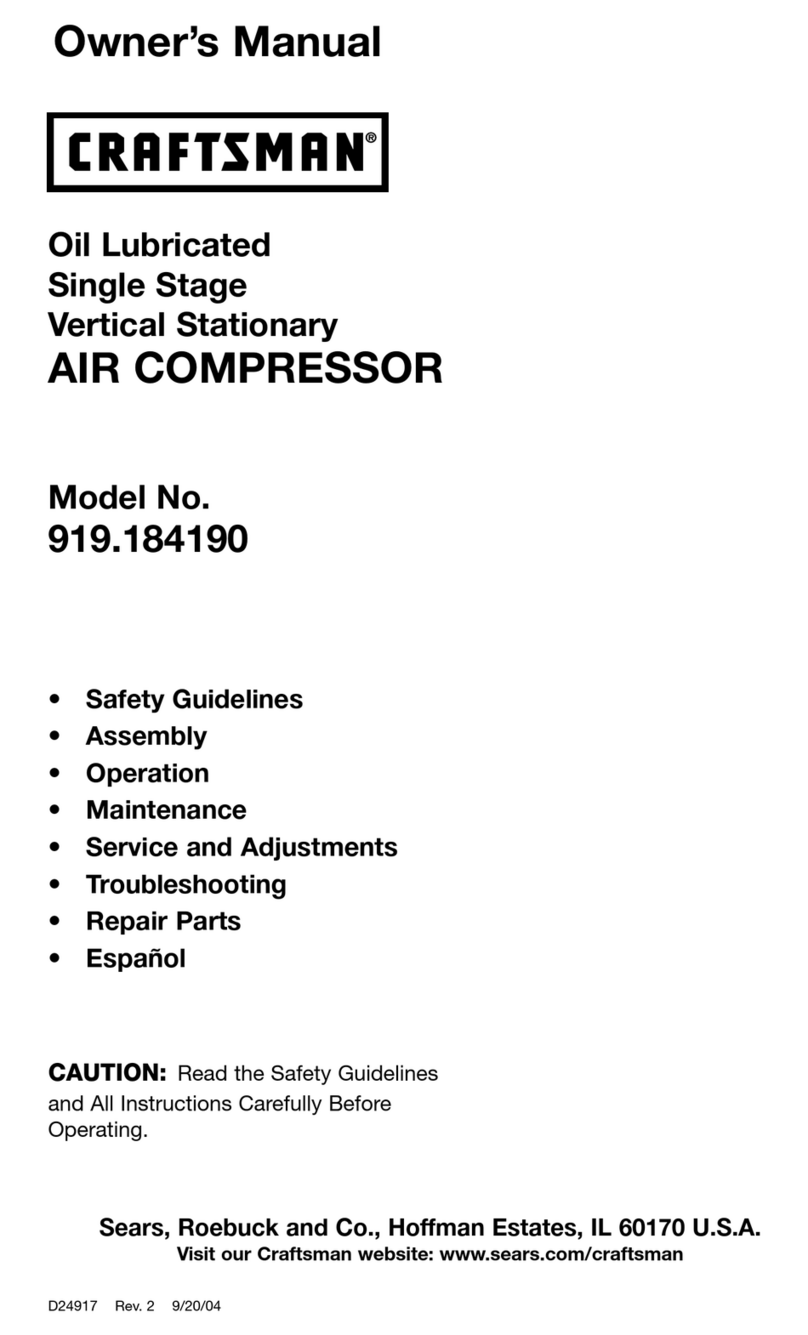ϴ
1904 0504 83
electrical isolating switch is open, locked and labeled with a temporary warning before any
maintenance or repair. As a further safeguard, persons switching on remotely controlled
machines shall take adequate precautions to ensure that there is no one checking or working on
the machine. To this end, a suitable notice shall be affixed to the start equipment.
C F D
Air-cooled machines must be installed in such a way that an adequate flow of cooling air is
available and that the exhausted air does not recirculate to the compressor air inlet or cooling
air inlet.
C G D
The electrical connections must correspond to the applicable codes. The machines must be
earthed and protected against short circuits by fuses in all phases. A lockable power isolating
switch must be installed near the compressor.
CHD
On machines with automatic start/stop system or if the automatic restart function after voltage
failure is activated, a sign stating "This machine may start without warning" must be affixed near
the instrument panel.
C I D
In multiple compressor systems, manual valves must be installed to isolate each compressor.
Non-return valves (check valves) must not be relied upon for isolating pressure systems.
CJD
Never remove or tamper with the safety devices, guards or insulation fitted on the machine.
Every pressure vessel or auxiliary installed outside the machine to contain air above
atmospheric pressure must be protected by a pressure relieving device or devices as required.
C K D
Piping or other parts with a temperature in excess of 70°C (158°F) and which may be
accidentally touched by personnel in normal operation must be guarded or insulated. Other high
temperature piping must be clearly marked.
C L D
For water-cooled machines, the cooling water system installed outside the machine has to be
protected by a safety device with set pressure according to the maximum cooling water inlet
pressure.
E M D
If the ground is not level or can be subject to variable inclination, consult the manufacturer.
E C D
If the device is a dryer and no free extinguishing system is present in the air close to the dryer,
safety valves must be installed of the dryer.
E E D
Never Drill holes in an electrical cabinet. Small metallic burrs can cause short-circuits in
electrical components
E F D
Make sure to avoid condensation on electrical components (e.g. cubicle, Elektronikon and
frequency converter)
E G D
To preserve the protection of the electric cabinet and to protect its components from dust from
the environment and the entry of moisture in the electrical cabinet. It is absolutely necessary to
use a proper cable gland when connecting the power supply cable to the compressor.
Q B >< R 8 9 ; S 6 ?< 6 > ? @ 8 T 7 >P 7 8 9 O @8 9 ? > B A 7 : ; 9 O 8 S 8 P >: < < ?R 8 ; 7 A ? > < R : U > > V A ; 6 S >9 : W X U ; B
@< A 7 O 8 7 B < ? > B A 7 : ; 9 R ; ? > 8 9 O R 8 : 8 7 ; : ; >B W
EHD
Avoid contact with sharp edges hot surfaces to prevent damage to cable insulation.
E I D
Before initial start-up and after service interventions, make sure the following final inspection
checks are made:
a. Inspect all electrical connections to verify there are no loose connections and all are
tightened correctly
b. Check for strain relief on the (main) power cables.
c. Verify that the power requirement for the unit has been provided for by referencing to the unit
power label on the inside of the electrical cabinet door of the unit
d. The branch circuit protection and supply cable size for the compressor must be sized to
meet the power requirement per local electrical codes
e. Verify that the unit is correctly grounded using the proper size of wire connected to a tested
earth ground
Y 9 Z S 6 ?<6>? >7> @ :?;@8 7 ; 9 B : 8 7 7 8 : ; < 9 @8 9 ? > B A 7 : ; 9 O 8 S 8 P >: < < ?R 8 ; 7 A ? > < R : U > > V A ; 6 S >9 : W
X U ; B @< A 7 O 8 7 B < ? > B A 7 : ; 9 R ; ? > 8 9 O R 8 : 8 7 ; : ; >B W
EJD
Before initial start-up and after service inventions , make sure the following final mechanical
inspection check are made:
a. Inspect all connections to make sure they are tight, sealed and secured.
b. Visually inspect metal or nylon tubing located in the compressor. Tubes can come loose or
get damaged in shipping. Verify the flexibility of the nylon tubes while inspecting for damage.


